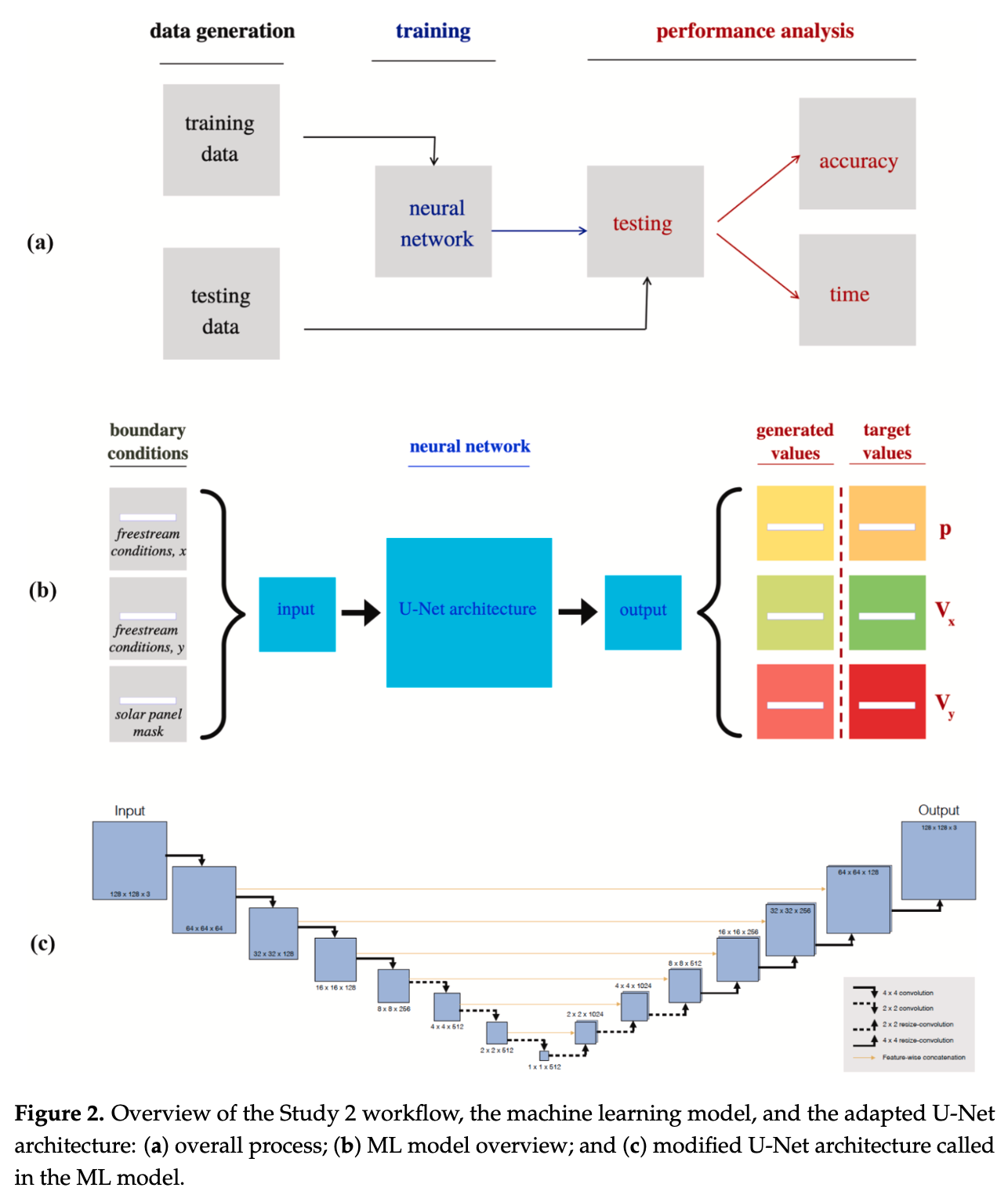💻 CFD Simulations: Advanced Modeling for Wind Engineering
Computational Fluid Dynamics (CFD) has emerged as an indispensable tool for augmenting traditional laboratory wind tunnel testing. By allowing for full-scale modeling and precise control over boundary conditions, CFD offers a powerful virtual environment to predict wind-induced loads and flow patterns with high fidelity, especially when considering realistic atmospheric inflow turbulence. The WISE Research Lab is focused on advancing the accuracy and computational efficiency of CFD techniques in structural and environmental engineering applications.
Machine Learning Integration for Predictive Fluid Dynamics
The integration of Machine Learning (ML) is fundamentally reshaping CFD, leading to a paradigm shift that dramatically enhances both the accuracy and speed of numerical simulations. The WISE Research Lab is pioneering the application of deep learning to improve turbulence modeling and inform design decisions for resilient structures.
- AI-Driven CFD: A Paradigm Shift: Machine learning techniques offer a compelling alternative to traditional closures and models, allowing for faster processing of complex flow characteristics and high-volume data sets. This capability is key to overcoming the computational limitations traditionally associated with high-fidelity CFD models like LES.
- Deep Learning for Turbulence Closure: Improved RANS Accuracy: We utilize deep learning to develop Deep Learning-Based Eddy Viscosity Modeling for Reynolds-Averaged Navier-Stokes (RANS) simulations. This innovation significantly improves the prediction of wind pressures on bluff bodies, enabling RANS models—which are computationally cheaper—to achieve accuracy comparable to more intensive LES models.
- Resilient Design and Green Communities: Solar Panel Wind Design: Our research demonstrates the combined power of CFD and ML for designing critical green energy infrastructure. The methodology integrates CFD simulation data with machine learning algorithms to accurately predict wind loads on solar panels, leading to more resilient and safe installations for sustainable communities.
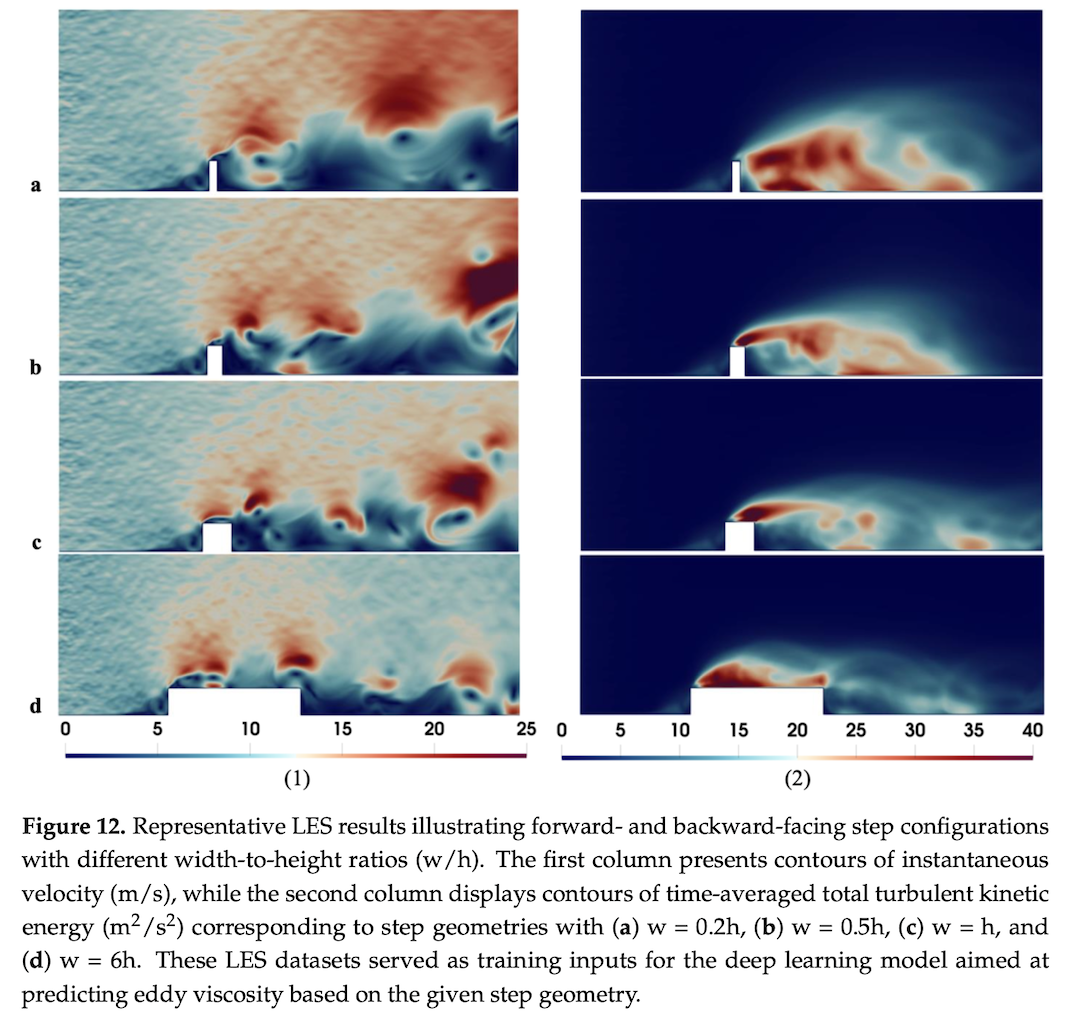
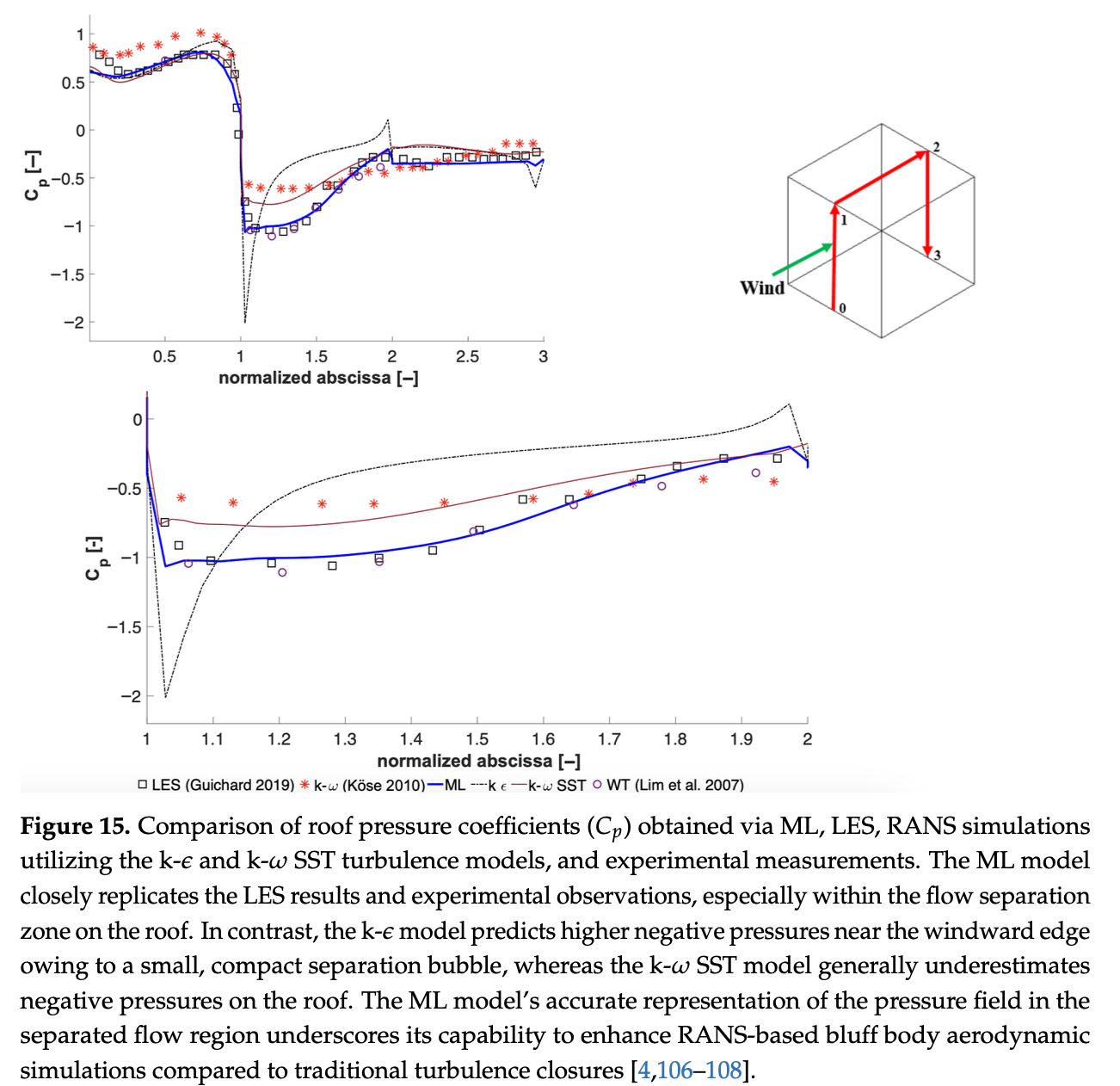
Validation, Scale Modeling, and Turbulence Closure
A core motivation for utilizing CFD is its capability to achieve full-scale modeling—a significant challenge in physical experiments where achieving fully developed turbulence with a realistic integral length scale is difficult. While the computational cost of predicting peak loads under turbulent flows is a notable drawback, our research aims to maximize accuracy and efficiency.
Large Eddy Simulation (LES)
- Accuracy at Full Scale: Our research demonstrates that CFD utilizing Large Eddy Simulation (LES) turbulence closure is capable of accurately reproducing peak pressures and loads on buildings at a 1:1 scale. LES successfully captures the spectral characteristics of the inflow, aligning with full-scale and open-jet pressure measurements.
- Proximity Studies: We conducted a computational proximity study using CFD LES on a prototype building, leading to novel recommendations for sizing the computational domain. These findings demonstrate that the placement of the test building deviates from existing RANS-based procedures (such as COST and AIJ) and that inflow boundary proximity significantly impacts pressure correlation.
- Computational Optimization: To mitigate the extensive computational expense associated with LES, we propose and validate several methodologies: (1) Incorporating the Wall-Adapting Local Eddy-Viscosity (WALE) subgrid-scale (SGS) model for notable reduction in computational time while preserving minimal error. (2) Utilizing hybrid models like Detached Eddy Simulation (DES) and Delayed Detached Eddy Simulation (DDES), which exhibit substantial computational cost reductions relative to LES, particularly when employing the dynamic one-equation eddy-viscosity SGS model.
Strategic CFD Applications in the Built Environment
We apply advanced CFD techniques to address critical, real-world problems in urban and hydraulic engineering, generating novel insights for design and mitigation.
Urban Heat Island (UHI) Mitigation
CFD is utilized to investigate the impact of altering urban geometrical canyons on wind flow patterns and air temperatures, key factors governing the UHI phenomenon.
- Building Configurations: Our comprehensive simulations encompassing various urban building configurations reveal that step-up building configurations substantially enhance canyon wind speed.
- Spacing Ratio: We demonstrated an inverse relationship between building spacing ratio and average canyon temperatures, suggesting that higher spacing ratios are effective strategies for UHI mitigation. Furthermore, our study indicates that employing larger y+ values, exceeding recommendations from existing literature, can still yield accurate results for velocity and temperature dynamics around buildings.
Hydraulic Engineering and Scour Mitigation
In hydraulic engineering, CFD plays a crucial role in understanding and mitigating scouring mechanisms around critical infrastructure, such as bridge piers and offshore wind turbines.
- Scour Countermeasures: Using LES and RANS simulations, we investigate the optimization of pier design to effectively mitigate scour. We model countermeasures like delta vanes and plate footings, demonstrating their effectiveness in reducing shear stress.
- Optimal Solution: A combination of delta vanes and plate footings is identified as a promising solution to reduce upstream and downstream bed shear stress, enhancing the longevity of critical infrastructure against scour-related damage while potentially reducing construction and maintenance costs.
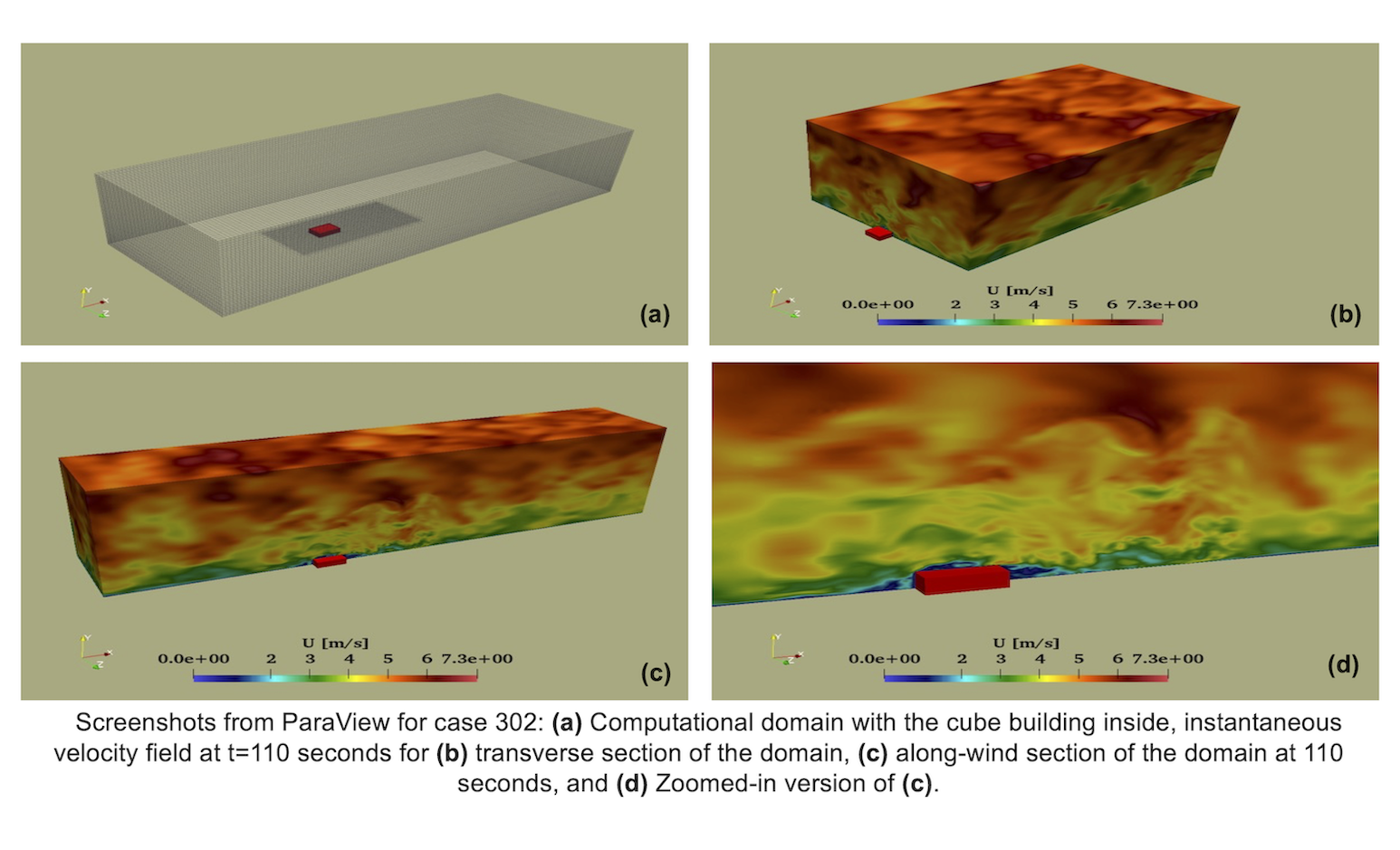
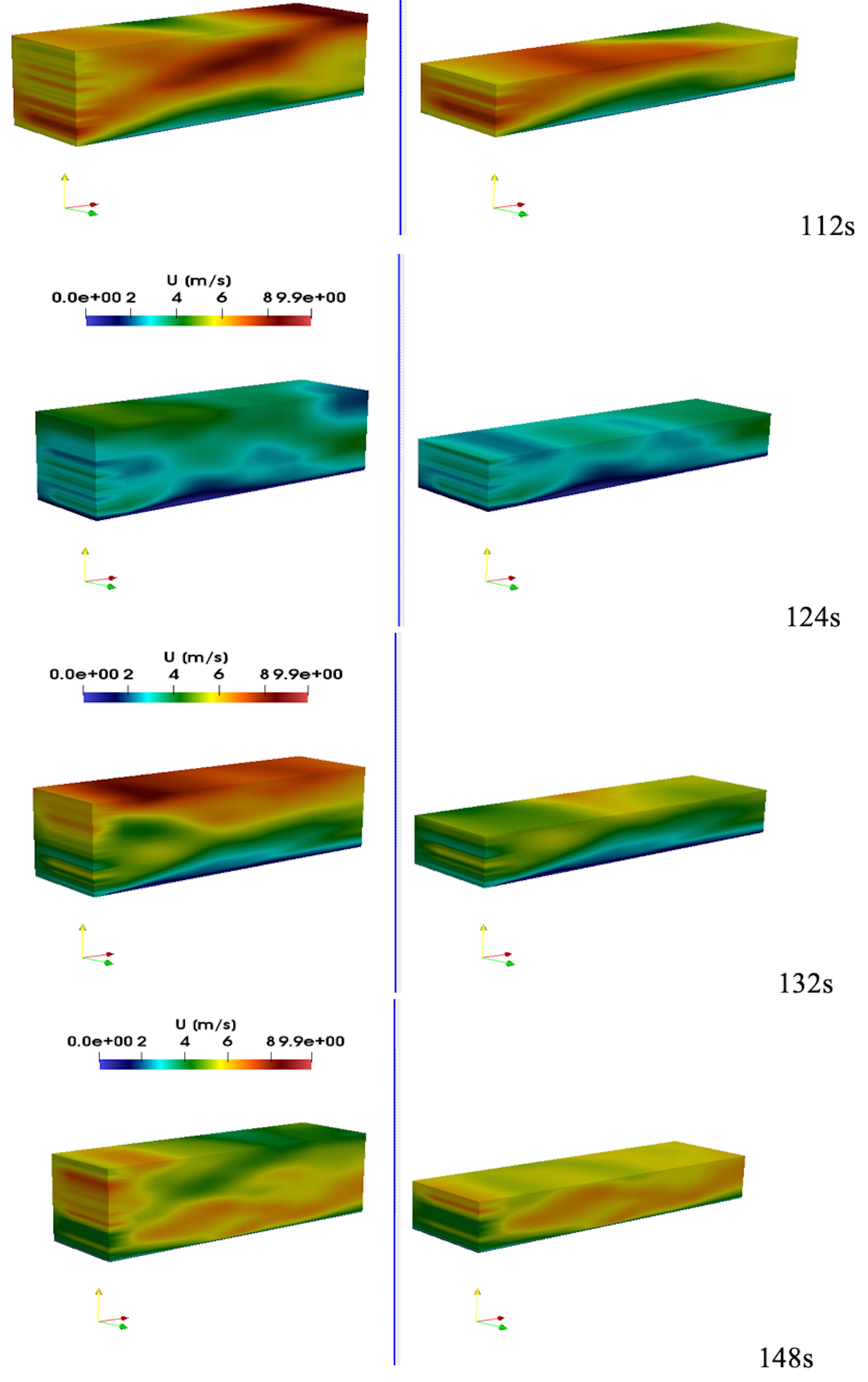
Velocity contours, from ParaView, at different times. All subfigures on the left are
of full domain height and clipped at mid-width, and all subfigures on the right are
clipped at mid-height of the computational domain.
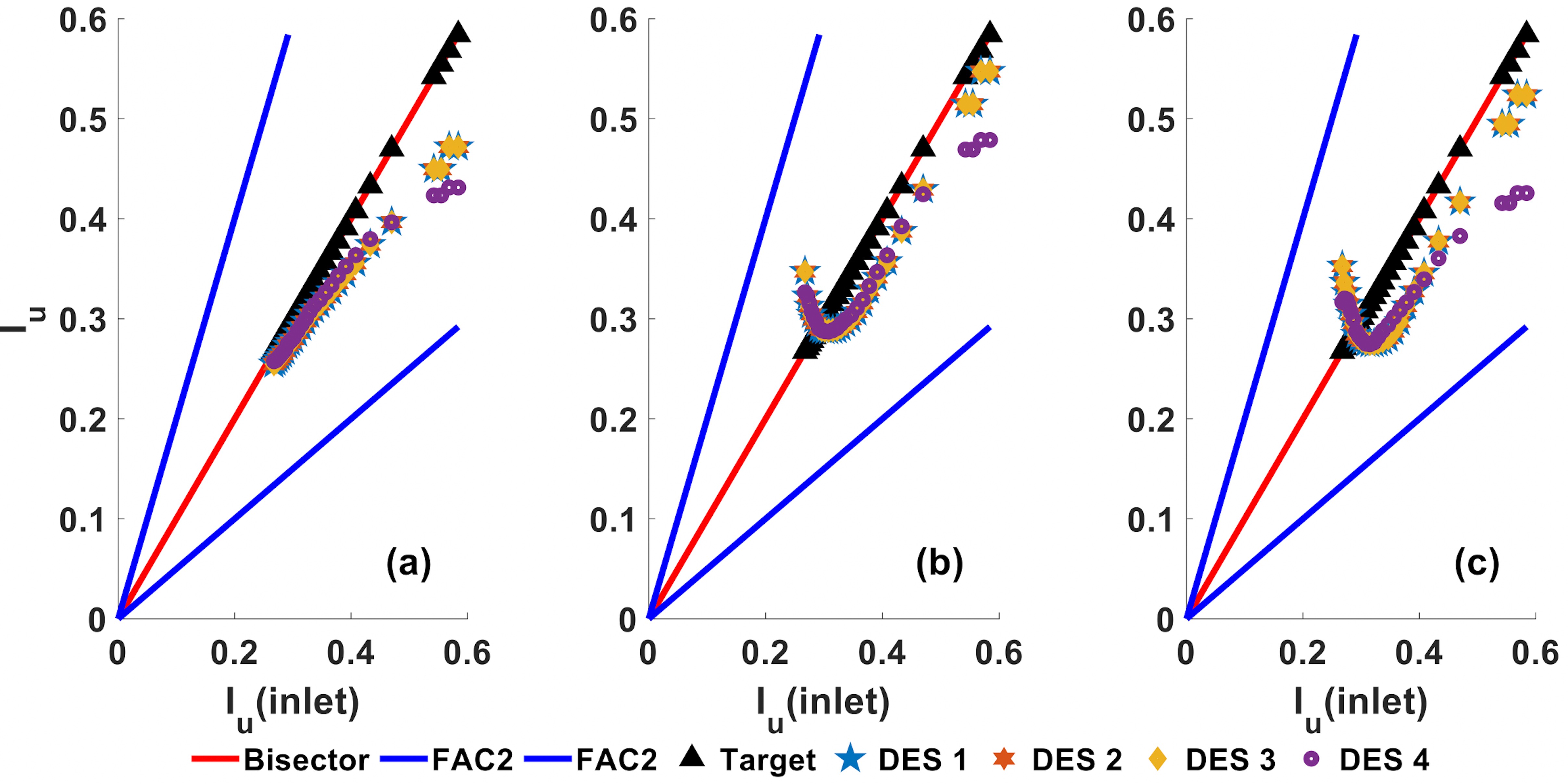
Scatter plot for comparison of turbulence intensities provided at the inlet with the
target ones and with those obtained from different DES cases at locations A (a), C
(b), and E (c).
Relevant Publications
- Aly, A.M. (2025), "Machine Learning Reshaping Computational Fluid Dynamics: A Paradigm Shift in Accuracy and Speed," Fluids, 10(10), 275. https://doi.org/10.3390/fluids10100275
- Aly, A.M., Clarke, J. (2023), "Wind Design of Solar Panels for Resilient and Green Communities: CFD with Machine Learning," Sustainable Cities and Society, 94, July 2023, 104529. https://doi.org/10.1016/j.scs.2023.104529
- Aly, A.M. (2024), "Deep Learning-Based Eddy Viscosity Modeling for Improved RANS Simulations of Wind Pressures on Bluff Bodies," Journal of Applied Fluid Mechanics, 17(12), 2514-2532. https://doi.org/10.47176/jafm.17.12.2770
- Khaled, M.F, Aly, A.M., Elshaer, A. (2021), "Computational Efficiency of CFD Modeling for Building Engineering: An Empty Domain Study," Journal of Building Engineering, 102792. https://doi.org/10.1016/j.jobe.2021.102792
- Aly, A.M., Khaled, F. (2023), "Optimizing Pier Design to Mitigate Scour: A Comprehensive Review and Large Eddy Simulation Study," Journal of Applied Fluid Mechanics, 16(7), 1296–1315. https://doi.org/10.47176/jafm.16.07.1691
- Aly, A.M., Goodlow, B., Conerly, J. (2022), "Urban Heat Island Mitigation via Geometric Configuration," Theoretical and Applied Climatology. https://doi.org/10.1007/s00704-022-04116-2
- Aly, A.M., Dougherty, E. (2021), "Bridge Pier Geometry Effects on Local Scour Potential: A Comparative Study," Ocean Engineering, 234, 109326. https://doi.org/10.1016/j.oceaneng.2021.109326
- Aly, A.M., Gol Zaroudi, H. (2020), "Peak pressures on low rise buildings: CFD with LES versus full scale and wind tunnel measurements," Wind and Structures, 30(1), 99-117. DOI: https://doi.org/10.12989/was.2020.30.1.099
- Aly, A.M., Chokwitthaya, C., Poche, R. (2017), "Retrofitting Building Roofs with Aerodynamic Features and Solar Panels to Reduce Hurricane Damage and Enhance Eco-Friendly Energy Production," Sustainable Cities and Society, 35, 581-593. DOI: 10.1016/j.scs.2017.09.002
- Aly, A.M. (2016), "On the evaluation of wind loads on solar panels: The scale issue", Solar Energy, 135, 423-434.
- Aly, A.M., Bresowar, J.R. (2016), “Aerodynamic mitigation of wind-induced uplift forces on low-rise buildings: a comparative study”, Journal of Building Engineering, Elsevier, 5, 267–276.
- Aly, A.M. (2014), “Atmospheric boundary-layer simulation for the built environment: past, present and future,” Building and Environment, 75, 206-221.
